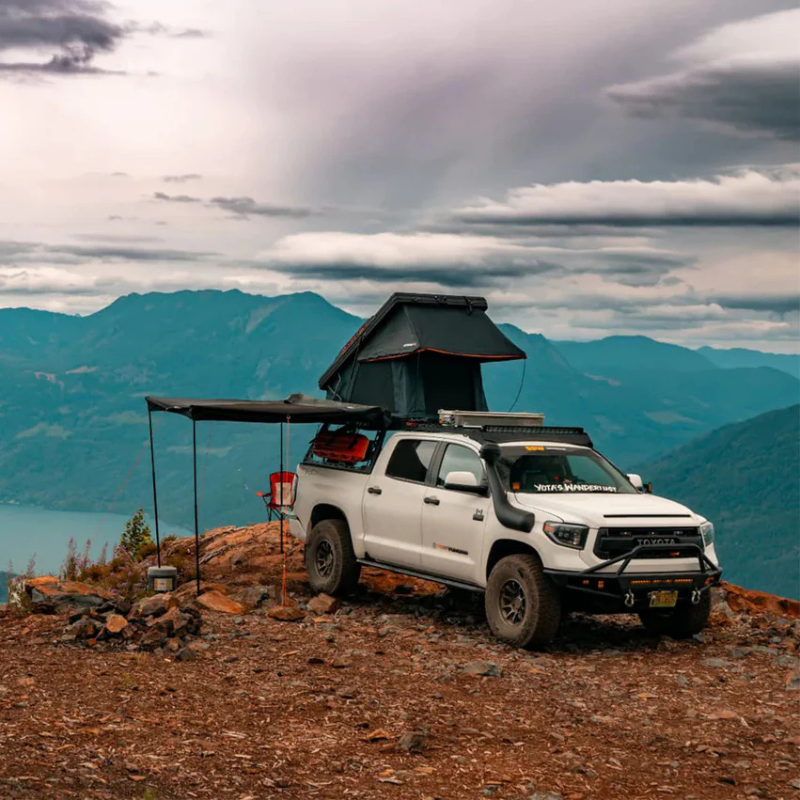
The Beginner's Guide to Overlanding: Embrace the Journey
If you’ve stumbled upon the term "overlanding," you’re not alone. The word often brings to mind images of rugged terrains and adventurous souls, but overlanding means different things to different people. For some, it’s a weekend getaway through local trails. For others, it’s a multi-country trek across remote landscapes. Whatever your interpretation, getting started in overlanding is more accessible than you might think.
1. Start Simple: Gear and Vehicle
Overlanding can sound intimidating, but it doesn’t need to be. The first step is to outfit your vehicle, and the key here is to start simple. While it’s tempting to purchase every piece of high-end gear out there, overloading your rig with unnecessary items can take away from the experience. Instead, focus on the essentials—shelter, cooking gear, sleeping equipment, and safety tools—and build your kit slowly.
When choosing your rig, ensure it's well-suited to your travel goals. You don’t need a heavily modified vehicle for your first trip; in fact, it’s better to begin with a vehicle that’s manageable and ready to handle the basics. As you gain experience, you’ll get a better sense of what additional gear or modifications might be necessary.
2. Learn the Basics: Training and Driving Skills
Before hitting the road, take some time to refresh your driving skills. If it’s been a while since you’ve driven off-road or tackled challenging terrain, consider taking a defensive driving course or a training class specific to off-road driving. It’s not only about driving; overlanding involves problem-solving on the go. Training in vehicle recovery and first aid can make a huge difference in an emergency.
3. Explore Locally: Where to Go for Your First Overlanding Trip
The idea of venturing into the wild can seem overwhelming, but there’s no need to start with a long-distance trek. In fact, many experienced overlanders recommend staying local for your first trip. Research nearby national forests, local overlanding communities, or maps of trails near you. Use apps and websites designed to guide you toward safe and exciting routes that match your skill level.
The goal of your first trip is not to conquer the toughest terrain but to get familiar with your vehicle and equipment. You’ll encounter unexpected challenges that will help you fine-tune your setup before embarking on more difficult journeys. It’s also an excellent way to test your gear to see what works—and what doesn’t.
4. Budget for Your Adventure: Financial Planning
Long-term overlanding can get expensive, but there are ways to manage your finances. Start by setting a budget that’s realistic for your planned trips, whether short-term or long-term. Consider the costs of fuel, food, shelter, and occasional gear upgrades.
If your goal is to travel long-term, you’ll also need to think about how you’ll support yourself on the road. Remote work has become more common, allowing overlanders to earn a living while traveling. If that’s not an option for you, budgeting for cost-effective accommodations and food will be key. Talk to other overlanders who have done long-term trips to get an idea of their budgeting strategies.
5. Embrace the Journey: Flexibility and Mentality
One of the most important lessons in overlanding is to embrace the journey over the destination. Overlanding isn’t about meticulously planning every detail; it’s about the experiences you gather along the way. Unexpected detours, mechanical problems, and unplanned adventures will inevitably occur. Instead of stressing over these challenges, learn to adapt, and view them as part of the adventure.
There’s no need to over-plan, either. Know your starting point, have a general idea of where you’re going, and leave room for spontaneity. This mentality will keep the experience fresh and exciting. The world of overlanding is vast, and there’s no one "right" way to approach it. Sometimes, the best memories are made when you least expect them.
6. Don’t Be Afraid to Ask for Help: Community and Inspiration
Overlanding is not something you have to do alone. There’s a huge online and offline community full of enthusiasts who share advice, experiences, and resources. Whether it's finding reliable gear or getting tips on specific trails, tapping into this network is invaluable. At overlanding expos or local meetups, you can connect with fellow travelers and share tips on everything from the best recovery gear to the most scenic campsites.
Final Thoughts: Get Out There
Overlanding is a journey of self-discovery and adventure. It’s about connecting with nature, learning about your vehicle, and meeting like-minded individuals. Don’t let fear of the unknown hold you back. Start small, build your skills, and be open to new experiences. Remember: The road ahead is not just about the destination—it’s about the stories you gather along the way.

